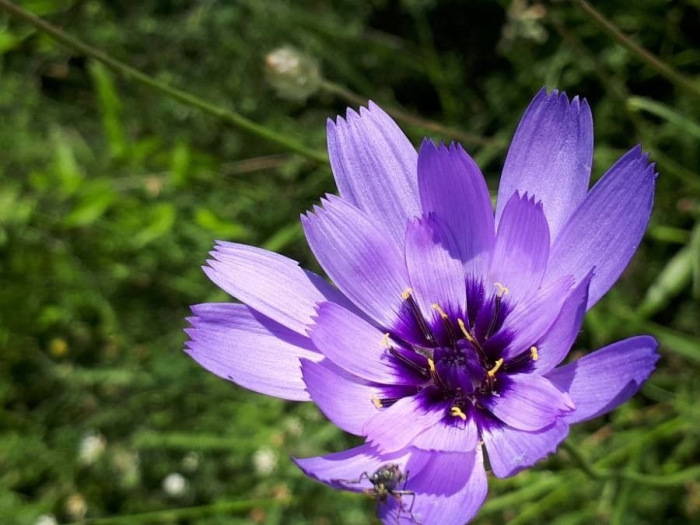Cupid’s Dart
(Catananche caerulea)
Cupid’s Dart (Catananche caerulea)
/
/

Patrice Luinaud
CC BY-SA 4.0
Image By:
Patrice Luinaud
Recorded By:
Copyright:
CC BY-SA 4.0
Copyright Notice:
Photo by: Patrice Luinaud | License Type: CC BY-SA 4.0 | License URL: https://creativecommons.org/licenses/by-sa/4.0/ | Attribution: Patrice Luinaud (cc-by-sa) | Rights Holder: Patrice Luinaud | Publisher: PlantNet | Date Created: 2020-06-10T22:00Z | Title: Catananche caerulea L.: flower | Notes: Glycyrrhiza glabra L.: leaf |























































Estimated Native Range
Summary
Catananche caerulea, commonly known as Cupid’s Dart, is a deciduous perennial herb native to the rocky soils of grasslands, open pine forests, and dry slopes in the Western Mediterranean region, particularly in Spain and Italy. This plant typically grows to a height of 20–90 cm and forms a greyish-green basal leaf rosette. From early to late summer, it produces conspicuous blue-purple or sometimes white flowerheads that are highly attractive to pollinators. The flowers, with their papery texture, are excellent for dried arrangements, retaining much of their color when preserved.
Cupid’s Dart is valued for its low maintenance and drought tolerance, making it a suitable choice for xeriscaping and rock gardens. It is also used in border plantings and as a cut flower due to its long vase life. In cultivation, it thrives in full sun and requires well-drained soil, preferably sandy or loamy. Overwatering or poor drainage can lead to root rot. While generally pest-free, it can occasionally suffer from aphids or fungal diseases in humid conditions. The cultivar C. caerulea ’Major’ has larger flowers and, along with ’Amor Blue’, ’Alba’, and ’Amor White’, has been recognized by the Royal Horticultural Society with the Award of Garden Merit.CC BY-SA 4.0
Cupid’s Dart is valued for its low maintenance and drought tolerance, making it a suitable choice for xeriscaping and rock gardens. It is also used in border plantings and as a cut flower due to its long vase life. In cultivation, it thrives in full sun and requires well-drained soil, preferably sandy or loamy. Overwatering or poor drainage can lead to root rot. While generally pest-free, it can occasionally suffer from aphids or fungal diseases in humid conditions. The cultivar C. caerulea ’Major’ has larger flowers and, along with ’Amor Blue’, ’Alba’, and ’Amor White’, has been recognized by the Royal Horticultural Society with the Award of Garden Merit.CC BY-SA 4.0
Plant Description
- Plant Type: Herb
- Height: 1-2 feet
- Width: 0.8-1 feet
- Growth Rate: Moderate
- Flower Color: Purple, White
- Flowering Season: Summer, Fall
- Leaf Retention: Deciduous
Growth Requirements
- Sun: Full Sun
- Water: Medium
- Drainage: Fast
Common Uses
Bee Garden, Bird Garden, Butterfly Garden, Deer Resistant, Drought Tolerant, Hummingbird Garden, Low Maintenance, Rock Garden, Showy Flowers
Natural Habitat
Grasslands, open pine forests, and dry slopes in the Western Mediterranean region
Other Names
Common Names: Cupid’s-Dart, Blue Cupidone, Blaue Rasselblume, Amorpfeil, Blå Gräsfibbla
Scientific Names: , Catananche caerulea, Catananche propinqua, Catananche carpholepis, Catananche caerulea var. tlemcenensis, Catananche caerulea var. tenuis, Catananche bicolor, Catananche caerulea var. propinqua, Catananche caerulea var. armerioides, Catananche caerulea var. caerulea
GBIF Accepted Name: Catananche caerulea L.